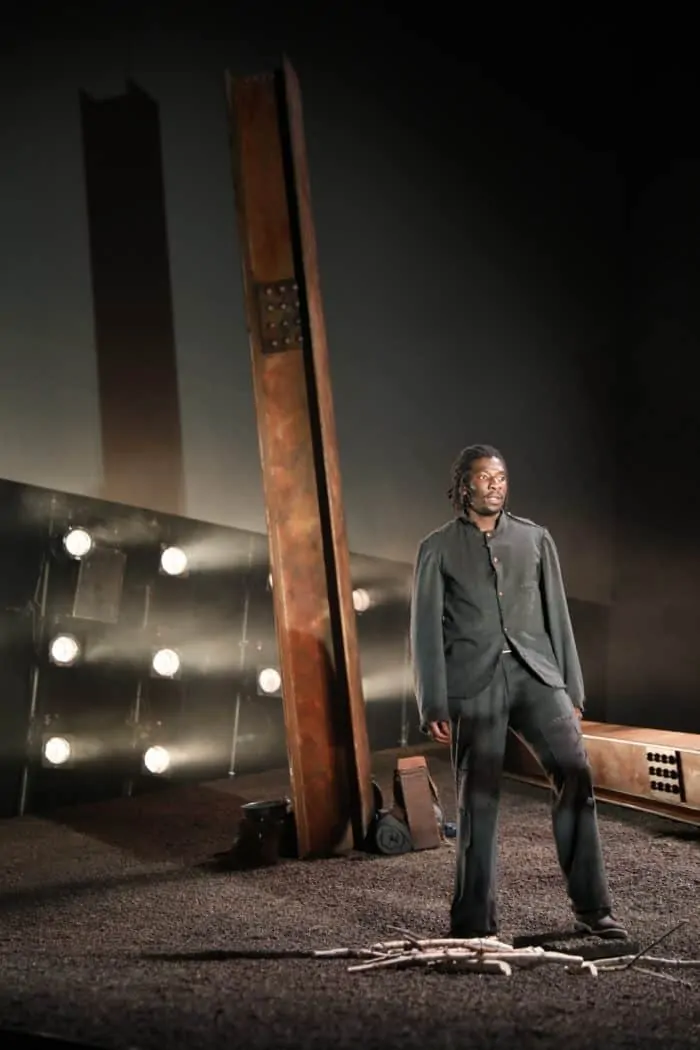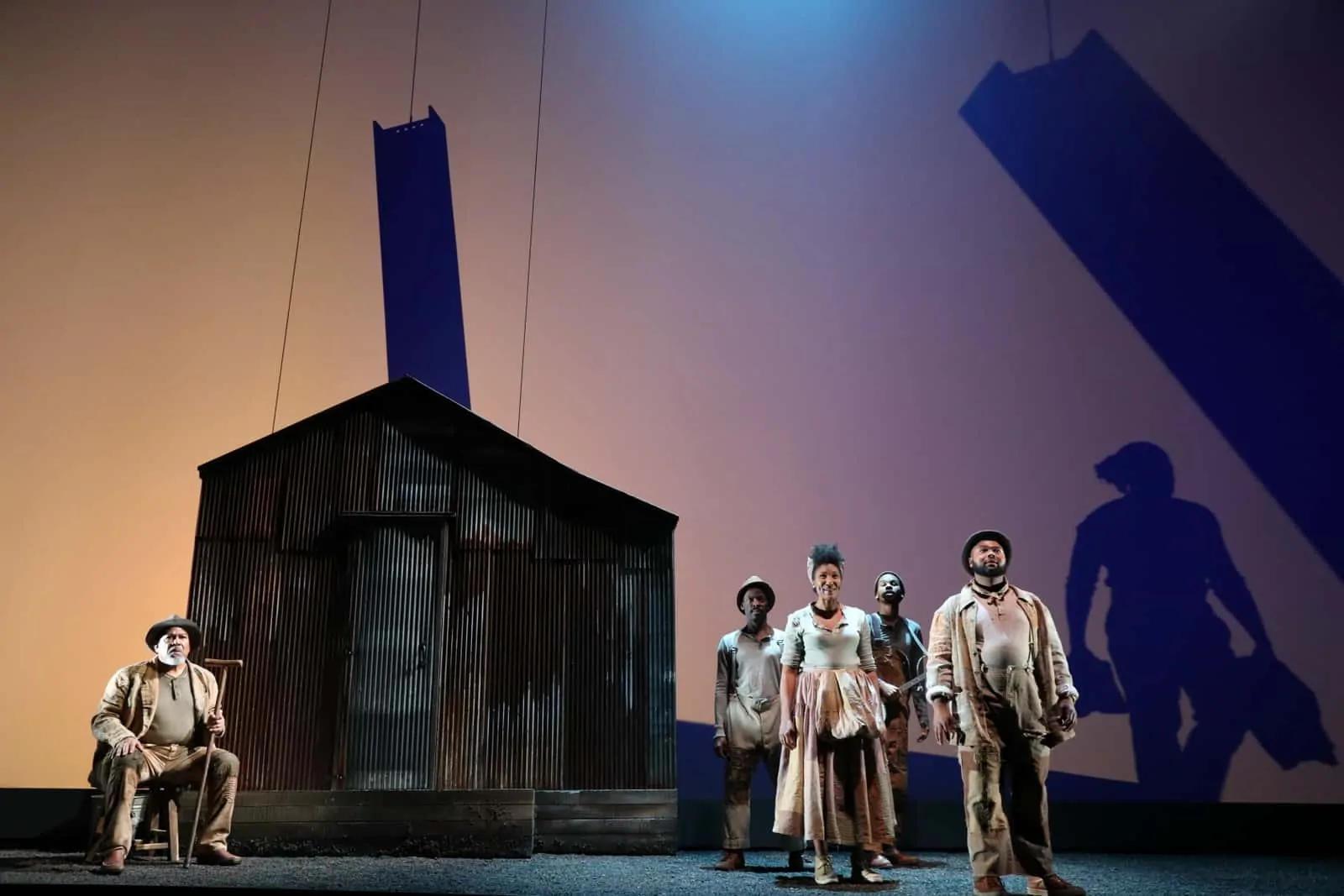Midway through Father Comes Home from the Wars (Parts 1, 2 & 3, at A.C.T.’s Geary Theater in San Francisco), a Confederate colonel sets his Union prisoner Smith guessing his slave Hero’s price. The callous discussion of a human being’s dollar value horrifies Smith (and the audience), but to the colonel and Hero, it’s mundane. Later, when Smith discusses the end of slavery with Hero, Hero is concerned that in a world without slavery, he won’t have a price. “Where’s the beauty in not being worth nothing?”
It’s not that Hero doesn’t yearn for freedom—he goes to war in hopes of winning it. But how to get there? As the play repeatedly points out, freedom that must be conferred by an owner is no freedom at all. Neither is “stolen” freedom, with its dangers and doubts. Smith and Hero are prescient about that complications that emancipation will bring, and the truth that “the heart of things won’t change easy or quick.” Hero’s prediction that patrollers will be a danger to him as a free Black man are still valid a century and a half after the play’s setting.
This first installment of Father Comes Home from the Wars takes an unflinching look at the cruelty and evil of slavery, while acknowledging that its opposite—freedom—is messy.
Appropriately, staging elements refuse to stay rooted in the nineteenth century. A “forest” of steel girders and yellow-red lighting set a post-apocalyptic vibe for part 2, which takes place near the battlefield. Hoodies and “hands up, don’t shoot” poses evoke twenty-first-century examples of violent racism. Director Liz Diamond creates beautiful tableaux with shadow silhouettes and carefully choreographed blocking. There are long stretches where the stage action feels static, with only the energy of Suzan-Lori Parks’ words to keep up the play’s momentum.
Fortunately, those words are forceful and surprising. Parks uses rhythm, repetition, music, and puns in individual lines and in the play’s overall structure. Parts 1 and 3 both revolve around “will they go, won’t they go” debates and have characters using their hands to measure the time until sunrise/sunset. Groups of slaves and runaways act as a Greek chorus, echoing and building on each other’s phrases. The musician (Martin Luther McCoy) serves as another chorus, punctuating the action with jazzy guitar ballads. Plays on words slip subtly into lines (“stealing yourself” / “steeling yourself”) and situations (a shaggy dog story told by a shaggy dog). Despite its serious subject matter and life-threatening scenarios, an undercurrent of humor flows throughout the show.

wilderness during the Civil War.

Leader (Chivas Michael), Homer (Julian Elijah Martinez) and The Oldest Old Man (Steven
Anthony Jones), Hero’s surrogate father—place bets over whether Hero will accompany The
Colonel to the Civil War in Suzan-Lori Parks’s Father Comes Home from the Wars (Parts 1, 2 &
3), performing at A.C.T.’s Geary Theater April 25–May 20, 2018.
For all its Odyssey references (including characters named Homer, Ulysses, Penny and Odyssey), Father Comes Home from the Wars (Parts 1, 2 & 3) isn’t much of an odyssey. The first two parts might be more accurately titled Husband Goes Away to the Wars, and even the third part doesn’t show Hero’s journey home. (Nor is there a son or daughter in sight.) Presumably, there will be an epic quest—and more displays of Ulysses-like cunning—in parts 4 through 9 (premiere years TBD). The expository role of parts 1 through 3 undercuts some of the dramatic conflict. The title alone tells us that of course Hero will choose to go away to the war, and of course he will survive and return. The only shocking revelation (shocking enough to evoke audible gasps from the audience) comes late in part 3, so the play doesn’t have much time to explore its consequences.
In that sense, parts 1 through 3 feel incomplete, but that doesn’t stop them from being powerful. This first installment of Father Comes Home from the Wars takes an unflinching look at the cruelty and evil of slavery, while acknowledging that its opposite—freedom—is messy. What does it mean, and how do we get it for everyone? Because we still have a long way to go.



